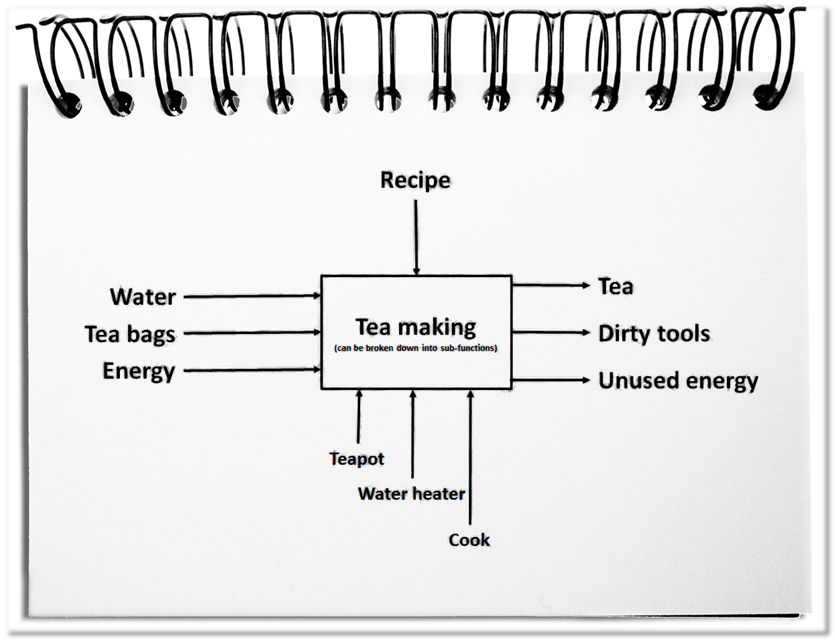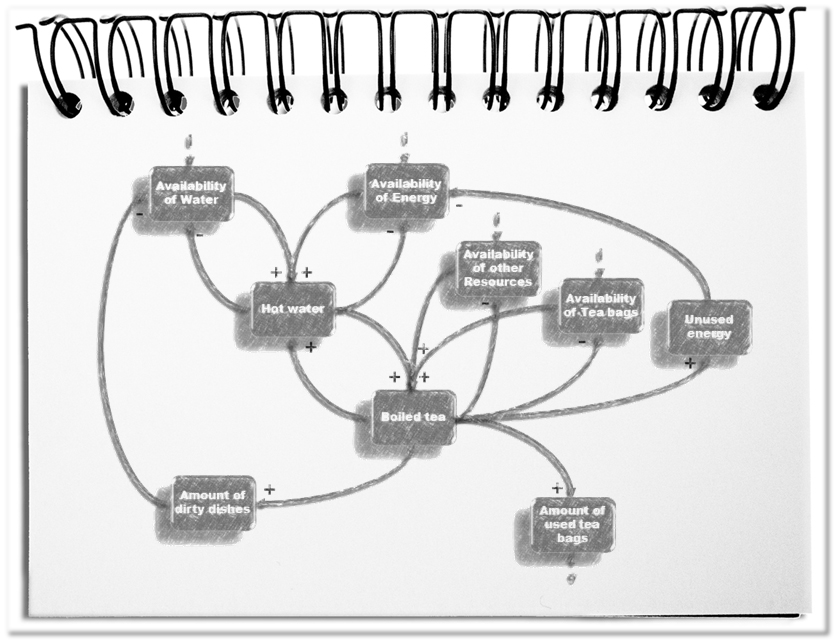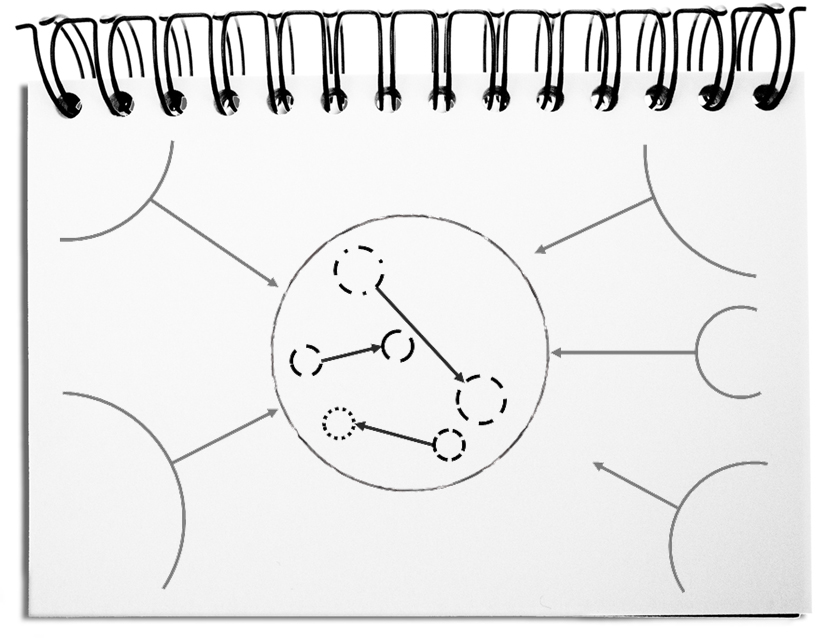The following text provides some examples for a discussion on Linkedin ( http://ow.ly/xQAJl ). The discussion is turning around the following example http://ow.ly/xQBE6 .
1) Input-Process-Output Diagram (IPO)
The IPO is focused more on the What-is-needed than the How-to-do-it. For this purpose, the diagram consists of three elements: Input, Process, and Output.
The Input provides all aspects that are required to do the Process. This can be information, controls, resources and other things. In the example these are controls (recipe), resources (teapot, water heater, and cook), and other things (water, tea bags, and energy).
The Process defines the functions. In this case, on the highest level the ‘Tea making’ function.
The Output documents the results of the Process. The outcomes are tea, dirty tools and unused energy.
Based on this diagram, it is possible to set up a process with all relevant elements. Usually this diagram is drilled down to an operational level with various diagrams.
2) Causal loop
The causal loop is focused on What-is-happening. For this purpose, the system is described with variables and links.
The variables are indicators of states (usually revenue, qualities, costs, acceptance). In our example availability and amounts. These parameters are affected by the links.
The links document dependencies of two kinds. These can be increases or decreases. The resulting affect is defined as a change of the receiving indicator in the same direction as the sender (+) or on the opposite direction (-). In our example the more water that is available, the more water can be boiled (+). The more water that is boiled, the less water is available (-).
Based on this diagram, the behavior over time of the system can be examined.
Bottom line: The purpose of the IPO is more likely the implementation of the process. The intention of the causal loop is to understand the behavior over time. You cannot swap functionality.
P.S.: Systems Thinking is an established way to look at systems of all kind. Here are some pioneers – Fritjof Capra, Peter Senge, Daniel Kim, Donella Meadows, Frederic Vester, Harmut Bossel.



